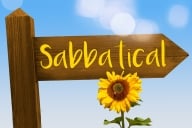You have /5 articles left.
Sign up for a free account or log in.

Svetlana Ivanova/iStock/Getty Images plus
Imagine you are a new assistant professor or a postdoctoral scholar in the humanities and you have landed a tenure-track or multiyear position at an institution with the express support of your new colleagues. You were hired for doing leading-edge work, perhaps in an emergent field, with a highly original project that impressed the search committee and that you are now expected to continue or complete.
But once you are in your new role and the academic year is underway, it can be difficult to justify and sometimes even defend the very work that you were hired to do. Curricula are established; tenure and promotion measures appear inflexible; the clock is ticking. Time-worn standards and publication expectations can discourage the very work that brought you to your new institutional home. This can feel suffocating, fast.
As established scholars at later points in our careers, how can we support nontraditional work in the humanities, work that might require us to revise our understandings of quality, rigor and impact?
Recently our university hosted a full-day event on rethinking tenure and promotion assessment in the humanities. For one of the panels, we invited seven early-career scholars from different disciplines to talk about their innovative work and how they hope to be supported along their professional journeys.
We took away nine lessons that we plan to put into practice on our campus. By following the leads of our own innovative scholars, we hope to shift the culture and make highly innovative work in the humanities much more seen and valued at our institution and perhaps others.
- Support scholars whose work moves across disciplines and media forms. As interdisciplinary and transdisciplinary humanities work has become more legible and lauded throughout the profession in curricular contexts, so too should it be acknowledged and nurtured in the early stages of careers. For scholars or creative practitioners who work in such fields as digital humanities, performing arts, creative writing and music, it should be expected that the end products may take on multiple forms that cannot be evaluated hierarchically. For instance, an album of recorded songs should not be considered subservient to or reliant on a book that contextualizes the material or explains the methodology.
- Recognize and reward collaboration. Counter to knee-jerk reactions that collaborative research or writing involves half the work, scholars and creative practitioners who collaborate regularly will often attest that it is just as time-consuming and intellectually demanding—and sometimes even more so—as sole-authored work. Rank and promotion committees should weigh and evaluate collaborative projects on their merits—not assume them to be second-tier or derivative work.
- Accept more than one type of book as deserving tenure. While not all humanities disciplines require books for tenure, many do, and they often share strict if tacit understandings of what counts as a tenurable monograph. But the academic monograph, published by a narrow set of prestige presses, should not be the only gateway to professional advancement. And determining how to value alternative approaches should go beyond simply coming up with a formula of equivalency for how many articles measure up to a monograph. Departments should consider crossover and trade books, as well as hybrid publishing models, as legitimate pathways to promotion, as long as the framing, connection to research and scholarly equivalency are made clear.
- Think expansively and generously about those who count as peers and experts in the field in evaluations. Innovative early-career colleagues may not have as many apparent or easily identifiable peers against whom they can be measured or established experts in their fields who can serve as evaluators. Chairs and mentors should be ready to work in good faith with their colleagues to identify appropriate peers and experts.
- Develop specific language for external evaluators. Such language should signal to the outside evaluators how the institution conceives of scholarly excellence, including innovative or hard-to-categorize work. That can have the added benefit of clearly demonstrating institutional buy-in, and such language is often something chairs need before they’re willing to allow early-career faculty to deviate from standard models.
- Understand translation as a time-intensive and intellectually demanding practice. The labor of scholars and creative practitioners who work in translation can be treated as secondary to critical or sole-authored creative output. But translation itself should be treated as a primary contribution to one’s field, especially when it brings underrepresented voices or emergent fields to new audiences. For well over a decade, leaders in the humanities have made this case, including a past president of the Modern Language Association, Catherine Porter, who called in 2010 for increased recognition of translation with respect to hiring and promotion.
- Respect public-facing work as concomitant with academic research. Public-facing work can be done in a way that advances, motivates and increases the impact of the ideas or questions that a scholar is working on. Whether written, recorded or otherwise, public-facing work can be constellated to show the outlines of a larger research or creative project, and thus it should factor into one’s scholarly profile.
- Appreciate creative projects that cannot be mass-produced or published on a large scale. Scholars and creative practitioners in certain areas may produce material that is intentionally limited in terms of how much it can be reproduced or disseminated. But there can be other ways to capture the value and lessons of such projects, such as through exhibitions of one-of-a-kind work or site-specific creative performances or collaborations. Evaluation committees should be prepared to consider portfolios that include work that is inherently limited and distinct.
- Develop reverse-mentoring programs to help advanced colleagues understand innovative work in their fields. Pair innovative scholars with more established colleagues for regular check-in meetings. The established scholars, having learned about the goals and followed the progress of their early-career colleagues, are then in a better position to advocate for such work to institutional leaders as well as when serving on rank and promotion committees.
These are just some of the top-line takeaways that we gleaned from listening to our early-career colleagues. By putting these recommendations into practice, we can better encourage such faculty members to do their best and most transformative work. And in so doing, we can make our institution a generative place for innovative work in the humanities at large.
We also hope the suggestions we’ve shared can be useful to colleagues, mentors and leaders at other institutions who are sincerely interested in the evolution of humanities research and creative scholarship and who wish to recruit and retain innovative faculty accordingly. It can be all too easy to defer to timeworn standards and professional norms as if they are set in stone, but such deferral can be debilitating to truly innovative work. When we instead help advance cutting-edge work in our fields, it can enliven our profession in unexpected ways—feeding new humanities courses and in turn leading to impacts that positively transform the humanities.








